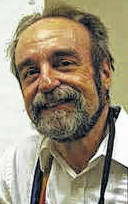
Two weeks ago, we discussed the “Great Debate” between Harlow Shapley, of Mount Wilson Observatory, and Lick Observatory’s Heber Curtis.
Shapley argued for the so-called Kapteyn Universe — that the Milky Way represented the entire universe, including the spiral nebulae. Many astronomers believed that the nebulae were individual stars coalescing or dying.
Curtis claimed that the spiral nebulae were separate “island universes,” to use the common term at the time.
Two critical advancements spelled doom for Shapley’s position.
Telescope technology advanced to the point that astronomers could see a few bright stars in the spiral nebulae in giant telescopes. More importantly, some of those stars, called Cepheid variables, pulsated. They regularly varied in brightness.
Between 1908 and 1912, astronomer Henrietta Leavitt discovered a relationship in Cepheid variables between the period of their pulsations and their brightnesses. Brighter Cepheid variables have longer pulsation periods, closer stars shorter ones.
Astronomers could thus calculate a star’s actual, or “intrinsic,” brightness from the time it takes for the star to brighten and fade. They could then compare its intrinsic brightness with the star’s measured brightness to find the distance.
Astronomers could thus use the period-luminosity relationship to measure distances to nearby Cepheid stars and galaxies with Cepheid stars in them.
We make such distance calculations intuitively every day. We know the brightness of car headlights from seeing them up close. We intuitively guess the distance of oncoming cars at night by noting how bright they seem.
The trouble for astronomers was that stars vary widely in their intrinsic brightness. As a rule, headlights don’t vary as much as stars.
Measuring the distance to Cepheid variables in the Milky Way was easy, but telescopes were not yet big enough in 1912 to see Cepheid stars in the spiral nebulae — if those stars were present at all. The time had come for yet another advancement in telescope technology.
In 1917, just five years after Leavitt’s remarkable discovery, a new telescope was put into operation on Mt. Wilson. The Hooker Telescope, then the largest in the world, was finally capable of resolving some of the brighter stars in the spiral nebulae.
Between 1923 and 1924, astronomer Edwin Hubble measured the distance to Cepheid variables in the Andromeda Nebula, also called M31, which turned out to be the closest spiral nebulae to our Milky Way.
He determined that M31 was 700,000 light-years away and thus separate from the Milky Way. The Andromeda Nebula became the Andromeda Galaxy.
At first, Harlow Shapley, the leading proponent of the Kapteyn Universe, dismissed Hubble’s work as “junk science.” However, Hubble sent him a letter that included a record of the pulsations of a Cepheid variable in the Andromeda Nebula.
Shapley was the first astronomer to recognize the pulsating nature of Cepheid variables. He had used Cepheid data gathered between 1914 and 1918 to determine the distance to the globular clustered huddled around the Milky Way’s disk.
In a moment that was to define Milky-Way astronomy to this day, Shapley reversed his stance. As he said to another astronomer, “Here is the letter that destroyed my universe.”
True to the principles of science, Shapley backed up his words with action. He spent much of the rest of his long career exploring the structure of the Milky Way and many other galaxies external to it.
The Andromeda Galaxy turns out to be more than three times farther away than Hubble estimated, but no matter. Hubble opened the door to our contemporary understanding of the Milky Way’s size and scope — a flattened disk of perhaps 300 billion stars, one of trillions of galaxies in a universe of unimaginable size.
That’s a far cry from Aristotle’s belief that the Milky Way was vapor rising from a crack in the earth. A more-or-less steady interest in the Milky Way over 2,500 years had finally coaxed our galaxy to reveal its essential secret.
Science had proven once again that a careful study of the natural world will, over time, yield a deepening understanding of the universe and our tiny place in it.
Several significant questions remained. One was the internal structure of the disk. Another was our sun’s position within the disk.
Please watch this space during upcoming weeks to explore those questions.
Tom Burns is the former director of the Perkins Observatory in Delaware.

